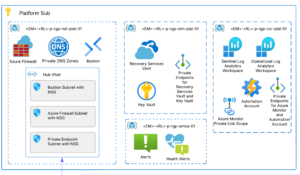So, you’ve decided it’s time to take your development game to the next level and embrace the wonders of GitHub. Congratulations – you’re about to embark on an exciting journey that will revolutionize how you and your team collaborate, build, and deploy software.
Adopting GitHub services isn’t just about creating an account and uploading your code – it’s about transforming your entire development workflow. From organizing your projects and teams with GitHub organizations to automating your CI/CD pipelines with GitHub Actions, and more! There’s a whole world of possibilities waiting for you.
About AIS’ GitHub Adoption and Migration Framework
AIS has developed a GitHub Adoption and Migration Framework that describes how to efficiently assess and develop an adoption plan, set up organizations, and teams, train and onboarding users, migrate code and CI/CD, introduce new collaboration capabilities, evaluate security and compliance, and supporting additional scaling and iterating effectively.
At its core, the framework is a comprehensive roadmap designed to streamline the transition process for organizations looking to embrace GitHub as their primary platform for their development lifecycle.
Phase 1: Assessment
To begin with, the framework emphasizes the importance of a thorough assessment phase. This involves evaluating the existing tools and workflows within the organization, identifying pain points, and understanding the specific needs and objectives driving the migration to GitHub. By conducting a detailed assessment, we can tailor the adoption plan to align closely with the organization’s goals, ensuring a smooth and efficient transition.
Phase 2: Planning
Once the assessment is complete, the framework provides guidance on developing a tailored adoption plan. This involves defining clear objectives, establishing timelines, and allocating resources effectively. Additionally, the framework outlines strategies for garnering stakeholders’ buy-in. Fostering a culture of collaboration is essential for a successful adoption.
Central to the adoption plan is the setup of organizations and teams within GitHub. This entails structuring repositories, defining access controls, and establishing workflows that reflect the organization’s unique requirements. We can promote visibility, accountability, and collaboration among team members through effective organization and team setup, driving productivity and innovation.
Phase 3: Training
Training and onboarding users represent another crucial aspect of the migration process. Our framework offers comprehensive training programs to empower users with the knowledge and skills to effectively leverage GitHub. Whether it’s navigating the platform’s features, mastering version control concepts, or adopting best practices for collaboration, our training initiatives ensure that users are equipped to maximize their productivity from the jump.
Phase 4: Migration
Migration of code and CI/CD pipelines is a significant milestone in the migration journey. The framework provides strategies and tools for seamless migration, minimizing disruption to ongoing development and deployment processes. By carefully planning and executing the migration, we ensure that code repositories and CI/CD pipelines are transferred to GitHub with minimal risk and downtime.
In addition to migrating existing workflows, the framework introduces new collaboration capabilities offered by GitHub. From code review and project management to issue tracking and discussions, GitHub provides a rich set of features that facilitate seamless collaboration across teams and projects.
Security and compliance considerations are paramount in today’s software development landscape. Our framework includes robust security measures and compliance controls to safeguard code repositories and sensitive data. By implementing access controls and monitoring mechanisms, we can help organizations mitigate security risks and ensure compliance with industry regulations and standards.
Phase 5: Monitor and Operate
Supporting additional scaling and iterating effectively are ongoing efforts in the migration journey. The framework offers strategies for scaling GitHub adoption across the organization, accommodating growth and evolving requirements. Furthermore, through continuous feedback and iteration, we refine and optimize the adoption plan to address emerging challenges and opportunities, ensuring long-term success and value realization from adopting GitHub.
Branching Out
Our GitHub Adoption and Migration Framework offers a comprehensive solution to seamlessly transition organizations to GitHub, enabling enhanced collaboration, accelerated innovation, and confident software delivery. Contact us today to unlock the full potential of GitHub within your organization and embark on a journey toward greater productivity and success.
Adopting GitHub services isn’t just about creating an account and uploading your code – it’s about transforming your entire development workflow. From organizing your projects and teams with GitHub organizations to automating your CI/CD pipelines with GitHub Actions, and more! There’s a whole world of possibilities waiting for you.






